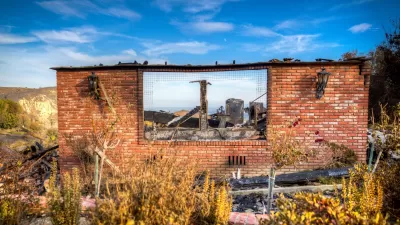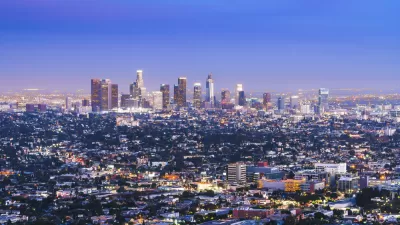While the Green Party nominates a presidential candidate every four years as a publicity stunt, other politicians—Democrats and Republicans alike—have been steadily pursuing a green agenda in California. California cities are better off for it.

As unnerving as it must be to witness the presidential campaign of the Green Party from elsewhere in the country, it's downright bizarre to watch it from here in California. On the one hand, many, if not most, California voters share Green values. On the other hand, they've already voted for those values. They've just voted for a different party.
Columnist Dan Savage recently published a series of scathing critiques (here, here) of the Green Party. They’re fun to read both for the acidity of Savage's sarcasm and for the depth of his indignation. He essentially says that the Green Party’s delusions of grandeur are almost as vast as those of Donald Trump. According to a blog post by party Chair Andrea Merida Cuellar, the Greens have won plenty of elections nationwide—president being only the most lofty—and the Greens hold exactly 116 of them.
As I contemplate the Greens' latest adventure, and the havoc that protest votes could wreak on our world this year, I consider that the Green Party isn't merely small-time. It's behind the times.

Study: Maui’s Plan to Convert Vacation Rentals to Long-Term Housing Could Cause Nearly $1 Billion Economic Loss
The plan would reduce visitor accommodation by 25,% resulting in 1,900 jobs lost.

North Texas Transit Leaders Tout Benefits of TOD for Growing Region
At a summit focused on transit-oriented development, policymakers discussed how North Texas’ expanded light rail system can serve as a tool for economic growth.

Why Should We Subsidize Public Transportation?
Many public transit agencies face financial stress due to rising costs, declining fare revenue, and declining subsidies. Transit advocates must provide a strong business case for increasing public transit funding.

How to Make US Trains Faster
Changes to boarding platforms and a switch to electric trains could improve U.S. passenger rail service without the added cost of high-speed rail.

Columbia’s Revitalized ‘Loop’ Is a Hub for Local Entrepreneurs
A focus on small businesses is helping a commercial corridor in Columbia, Missouri thrive.

Invasive Insect Threatens Minnesota’s Ash Forests
The Emerald Ash Borer is a rapidly spreading invasive pest threatening Minnesota’s ash trees, and homeowners are encouraged to plant diverse replacement species, avoid moving ash firewood, and monitor for signs of infestation.
Urban Design for Planners 1: Software Tools
This six-course series explores essential urban design concepts using open source software and equips planners with the tools they need to participate fully in the urban design process.
Planning for Universal Design
Learn the tools for implementing Universal Design in planning regulations.
City of Santa Clarita
Ascent Environmental
Institute for Housing and Urban Development Studies (IHS)
City of Grandview
Harvard GSD Executive Education
Toledo-Lucas County Plan Commissions
Salt Lake City
NYU Wagner Graduate School of Public Service






























